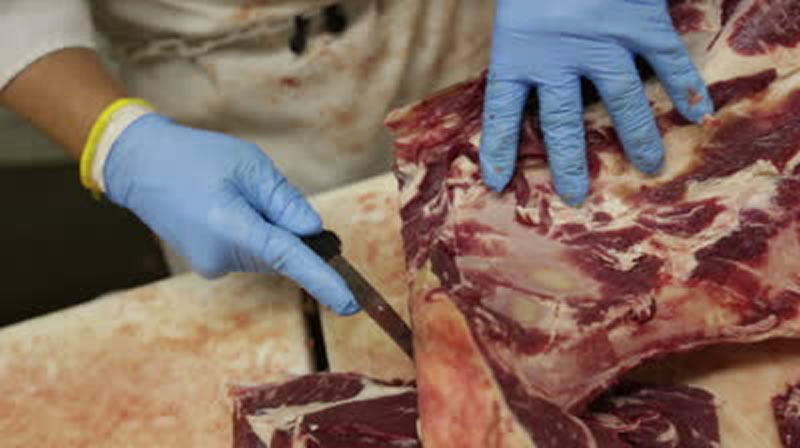

Share
Most meatpacking workers and some employers are unaware of a 2007 Minnesota law that spells out rights on the job, a legislative audit has found. The union representing some of these employees said the findings illustrate the need for stronger measures to protect worker safety and public health.
Last year, the Legislative Audit Commission directed the Office of the Legislator Auditor to evaluate the effectiveness of the 2007 Packinghouse Workers Bill of Rights.
The law requires meatpackers to inform employees of their rights to a safe workplace, to be free of discrimination and to join a union. It also requires employers to provide this and other workplace information in the workers’ native languages and to furnish all employees with adequate safety equipment.
Debate during the law’s passage focused on the historically high injury rates in the meatpacking industry and the need to reach a workforce that increasingly consists of immigrants employed in facilities in greater Minnesota.
The audit, released Wednesday, found that some employers and most meatpacking workers are unaware of the existence of the legislation. The law “sort of got lost,” Legislative Auditor Jim Nobles told commission members at a meeting at the state Capitol.
The state Department of Labor and Industry sent a mailing to employers after the law was passed, but has failed to do any publicity since then, the audit found. The department also “has not followed up with meat processing employers to see if they are following the requirements of the law . . .”
At the same time, the auditor noted that many of the provisions of the Packinghouse Workers Bill of Rights are contained in other state and federal laws governing workplace safety and collective bargaining rights. The report noted that the meatpacking industry has been subject to more state OSHA inspections than other industries.
The number of workplace safety violations in meatpacking – and all Minnesota workplaces – has been declining, according to workers’ compensation data cited in the report.
Labor and Industry Commissioner Ken Peterson cited that data in responding to the Legislative Audit Commission. “Worksites are being safer,” he said. “Meatpacking plants are being safer, too.”
Peterson agreed with the report’s recommendations that the department do a better job of reaching out to the industry, saying another mailing would be sent soon and information has been posted on the department’s website.
The United Food & Commercial Workers union, one of the organizations that pushed for passage of the 2007 law, was not surprised by the findings in the auditor’s report.
“We dispute the fact that injuries have declined,” said Bernie Hesse, director of special projects, legislative and political action for UFCW Local 1189 in South St. Paul. “We think they’re just not being reported.”
The audit acknowledges that possibility and cites a study by NIOSH, the National Institute for Occupational Safety and Health, whose investigators visited a South Carolina chicken processing plant. While the plant’s official overall injury rate was 7 percent, NIOSH researchers found that 42 percent of the workers were suffering from carpal tunnel injuries alone.
In an interview after the commission meeting, Peterson also acknowledged that “it’s hard for us to say” the true number of injuries. But he maintained the trend has been downward.
Hesse said the union would like state regulators to examine the “incredible” speeds on food processing lines, where many injuries occur. A reduction in line speeds to a more reasonable pace would benefit not only employees, but also the public, he said, adding, “Food safety and worker safety go hand in hand.”
Hesse also urged the Department of Labor and Industry to hire ombudsmen to interact with the different immigrant groups employed in the packinghouse industry. Approximately 12,000 people work in meat processing in Minnesota, the majority of them immigrants from Mexico, Central America, East Africa and Southeast Asia.
In 2014, Minnesota was home to 33 major meatpacking plants, ranging in size from 100 employees to more than 1,000. Most are located in the southern half of the state in communities such as Austin, Albert Lea, Faribault, Marshall and Worthington.

